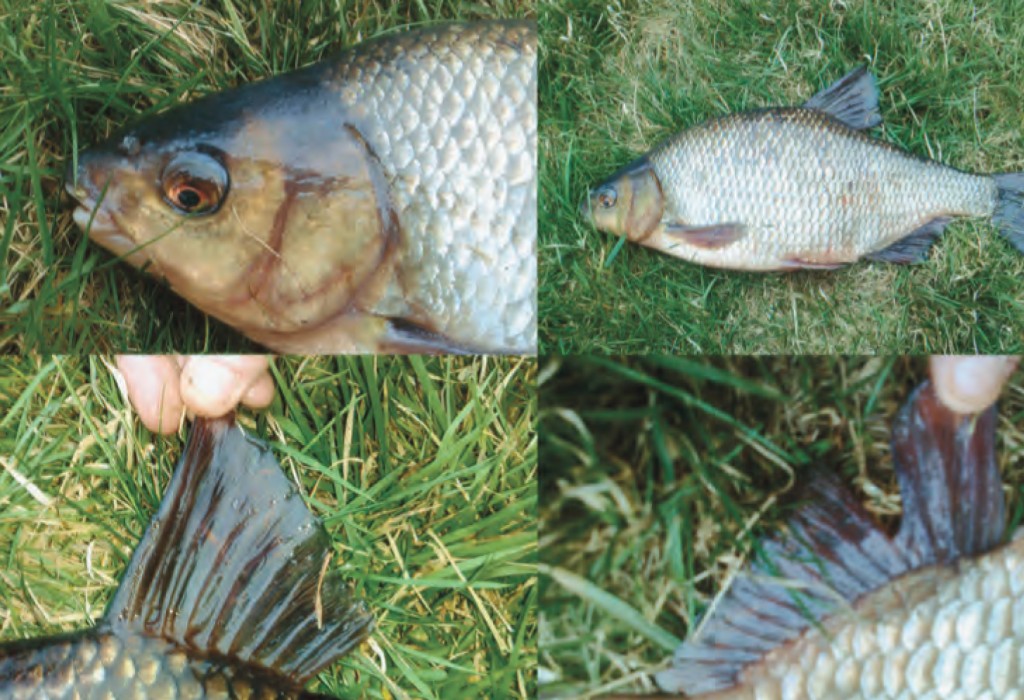Photographing Fish
In 2005 the ISFC added a clause to Rule 4 of the Rules for Specimen Fish Claimants which facilitated anglers who wished to present photographs for fish identification purposes instead of presenting a fish body. Subsequently, in July 2006 the Minister for Communications, Energy and Natural Resources introduced a bye law titled CONSERVATION OF AND PROHIBITION ON SALE OF COARSE FISH BYE-LAW NO. 806, 2006 which prohibits the killing of any coarse fish greater than 25 cm in length. This bye-law means that the ISFC cannot accept bodies of any coarse fish (dace, roach, rudd or any hybrids > 25 cm) from anglers for the purposes of claiming a specimen. This means that where a body is normally require to positively identify a species or hybrid, a photograph (or photographs) may be sufficient if it provides conclusive evidence of the identity of the fish. Therefore, to support a claim, anglers are requested to submit a small sample of scales (3 scales) in a dry envelope (not in a plastic bag or tin foil) along with good quality colour photographs. To assist anglers a list of the some external identification features for these particular species are presented below. However, the Committee cautions that a body, which will be examined by a biologist, is the only reliable means of ensuring a correct identification.
Photographs should be taken as soon as possible after the fish is captured. The photograph must be in focus, clear and in colour, printed on good quality paper and show the relevant identification features. It should ideally include the name of the angler and date of capture. Close up photographs are required for many features and these photographs should fill the entire frame. Retain the fish if unsure of photograph quality.

High quality Roach/Bream Hybrid identification. Images from Dubliner, Philip Brennan
IMPORTANT POINTS REGARDING CLAIMS – PHOTOGRAPHIC EVIDENCE OF NEW RECORDS
Except in the few cases where a body or presentation of the fish is required for species identification, a series of clear photographs must accompany all record fish claims. The photograph(s) must show the full fish lying on a flat surface and include a measure of scale (measurement mat, ruler, mobile phone, etc.). Preferably it would be photographed on a measuring mat or similar. Supplementary photographs showing the fish being weighed and the recorded weight would assist in further substantiating the claim.a
Fish Species and Features to photograph
Species | Features to photograph (a) The whole body (lateral view) must be photographed for all species AND (b) The specific features detailed below |
| All cyprinids (Dace, Roach, Roach/Bream, Roach/Rudd, Rudd, Rudd/Bream) | Body with fins extended and close ups of: (a) mouth - closed (b) dorsal fin (c) full lateral line (d) anal fin Three scales to be taken |
| Angler Fish | Head area showing head appendages upright |
| Brill | Close up of skin |
| Cuckoo Wrasse | Body - lateral view, close up of head |
| Dab | Close up of skin and lateral line |
| Flounder | Full body and close up of lateral line scales close to head |
| Garfish (B. belone) | Gill rakers count - body required |
| Garfish (B. svetovidovi) | Gill rakers count - body required |
| Golden Grey Mullet Thin-Lipped Mullet | Close up of: (a) head including pectoral fin (lying flat) (b) mouth showing upper lip (c ) underside of head |
| Grey Gurnard | Close up of lateral line and head |
| Grey Mullet | Close up of head showing upper lip (head on), underside of head to back of gills |
| Herring | Keel of fish |
| Lesser Spotted Dogfish | Underside of head |
| Mackerel | Close up of stripes on back |
| Megrim | Head |
| Ray's Bream | Close up of head |
| All Gurnards | Detail of lateral line, head and pectoral fin fully expanded |
| Red Mullet | Close up of head |
| River Eel (in tidal water) | Fully extended body |
| Scad | Close up of entire lateral line |
| Shad - Allis, Twaite & Hybrid | Three scales to be taken |
| Smooth-hound | Close ups (a) tail fin (b) underside of head showing mouth (c) back in region of dorsal fin |
| Three Bearded Rockling | Close up of head and chin area, and close up of area in front of dorsal fin |
| Torsk | Close up of skin, and dorsal and tail fin area |
